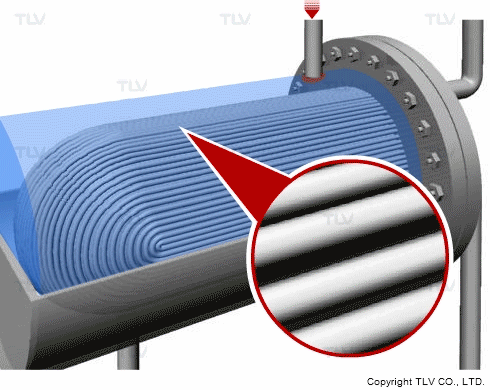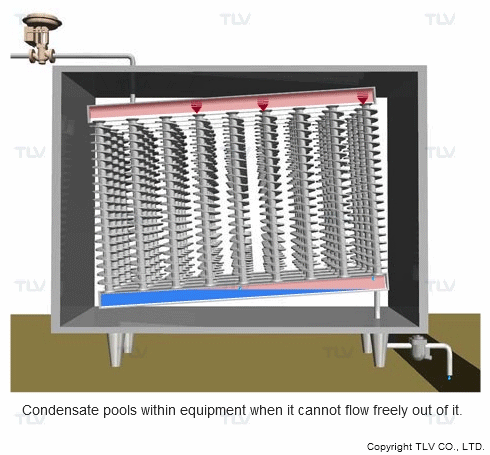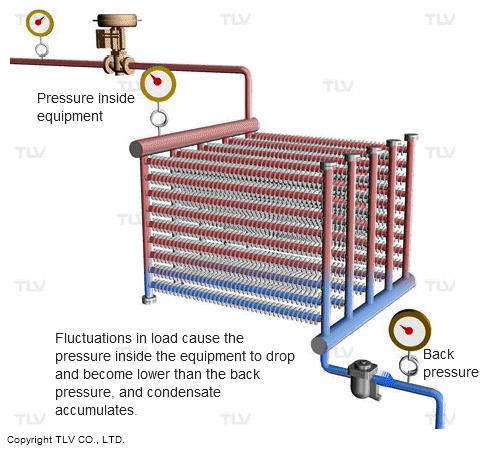- Home
- Steam Resources
- Steam Theory
- Water Hammer in Equipment
Steam Trap Problems
Water Hammer in Equipment
Water hammer inside equipment, just like water hammer in steam distribution lines, is often caused by high levels of accumulated condensate. The difference between the two is that this type of water hammer also occurs during steady operation.
Take for example shell and tube heat exchangers. When the load to the equipment drops (due to factors such as a reduction in the amount of product to be heated or an increase in the product's temperature), the pressure differential between the trap inlet and outlet pressures disappears, and condensate starts to pool inside the shell. This phenomenon is known as 'stall.' Depending on back pressure, the shell can also become full of condensate when the equipment is shut down.
When steam is supplied to an area that has a high level of condensate, it instantly condenses and water hammer occurs. In most cases, this results in small-scale impacts over a brief period, unlike the violent impacts that occur in steam distribution lines.
However, if this small-scale water hammer is allowed to continue over long periods of time, it can weaken the equipment to the point where the equipment suddenly ruptures. This breach often occurs under high pressure, heavy load, full operation conditions. The rapid discharge of condensate is thus critical from a preventative maintenance standpoint. For more information on this type of problem, visit our Stall Tutorial.
| Water Hammer in Shell and Tube Heat Exchangers |
|---|
|
|
In addition to stall, many other situations can lead to the accumulation of condensate inside equipment. Problems with heat exchanger construction or pressure-balancing lines, improperly installed steam traps and piping, and condensate return lines in bad condition are some examples of these. To identify and correctly prevent the accumulation of condensate, it is necessary to thoroughly determine its cause(s), and apply preventative measures accordingly.
Just as in steam distribution lines, the speed of condensate discharge combined with how smoothly the process occurs are two extremely important factors in the fight against water hammer in steam-using equipment.
Reasons Why Condensate Accumulates in Equipment
| Improper equipment construction or orientation |
|---|
|
|
| Stall |
|---|
|
|
Though these countermeasures may sound quite simple, it is not always actually possible to achieve them.
Cases in Which Countermeasures Are Difficult
For example, a single coil of a bottom heater on a 30,000 kl heavy oil tank can exceeded 100 m in length. The difference in level between the inlet and outlet on the heater results in a slope ratio of 1 in 300 or 400, which is less than half the pitch of typical steam piping (1/100-1/200). With this pitch, it is not always possible for condensate to flow downhill naturally by gravity.
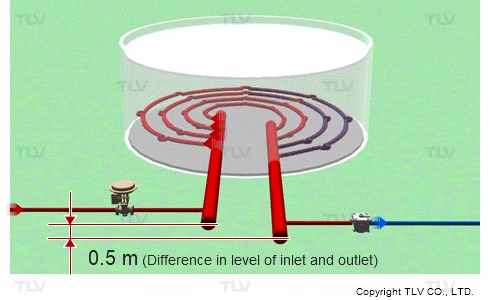
Completely resolving the problem might be difficult in cases like this, where the configuration of equipment does not allow for suitable downhill flow.
As mentioned above, stall can be another source of difficulties, especially in conventional heaters.
Effective countermeasures against water hammer in these types of situations is, for example, the use of a PowerTrap® (which uses steam to pump and remove condensate) and vacuum condensate recovery pumps.
Water Hammer in Condensate Transport Piping
Water hammer in condensate transport piping is usually caused by the interaction of low temperature condensate and high temperature steam. These often form from the dual presence of condensate and flash steam in the piping.
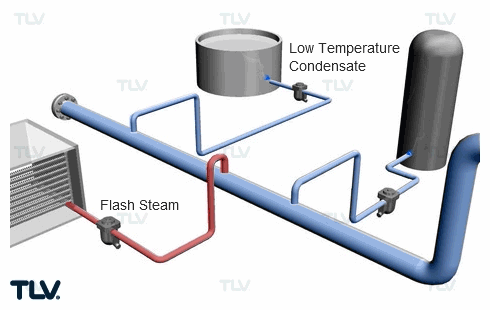
This pattern occurs at junctures where condensate transport lines with large pressure differentials meet, or near points where a condensate transport line meets a flash tank. At these junctures, high-pressure flash steam flows into the low-pressure condensate transport piping and water hammer occurs.
Condensate cannot be removed to solve this type of water hammer because the piping's very function is the transport of condensate. There are thus no direct countermeasures against water hammer in this type of piping, only remedies to lessen its effects.
Water Hammer caused by backflow of steam from condensate transport piping
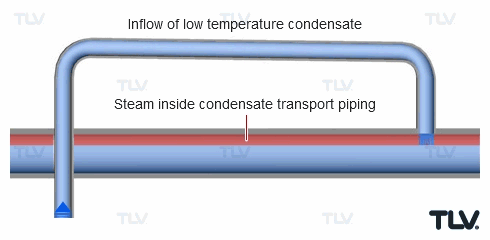
Water hammer caused by backflow of steam from flash tank
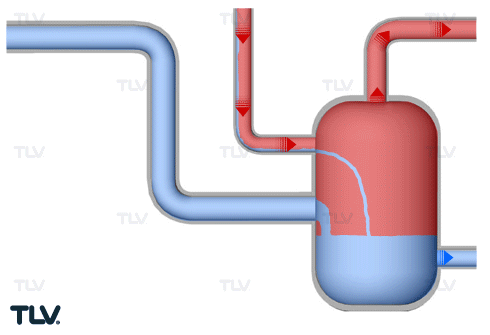
A countermeasure against this is the installation of a check valve to prevent the backflow of steam. However, the effectiveness of this countermeasure is reduced if the location or the type of check valve are incorrect.
